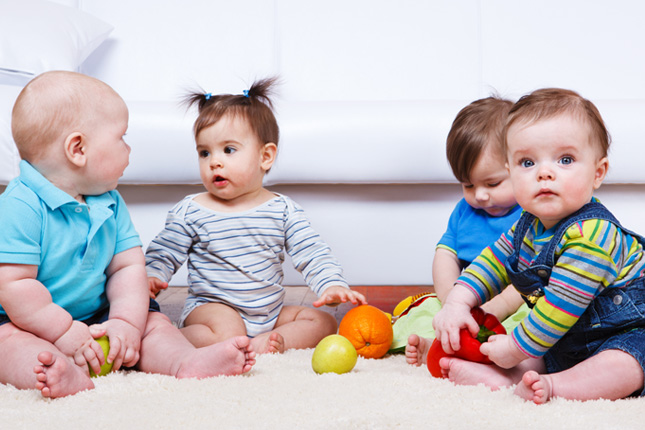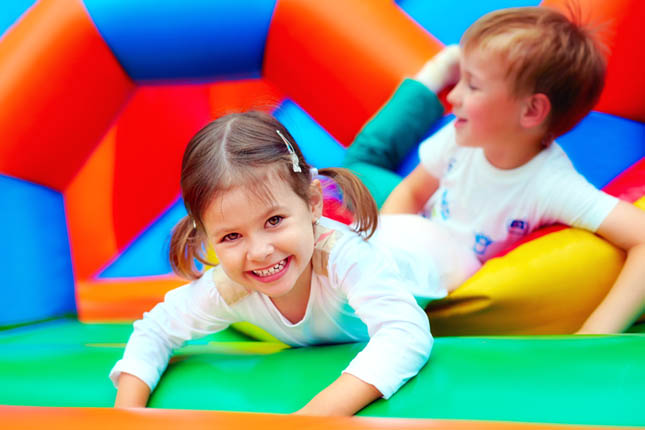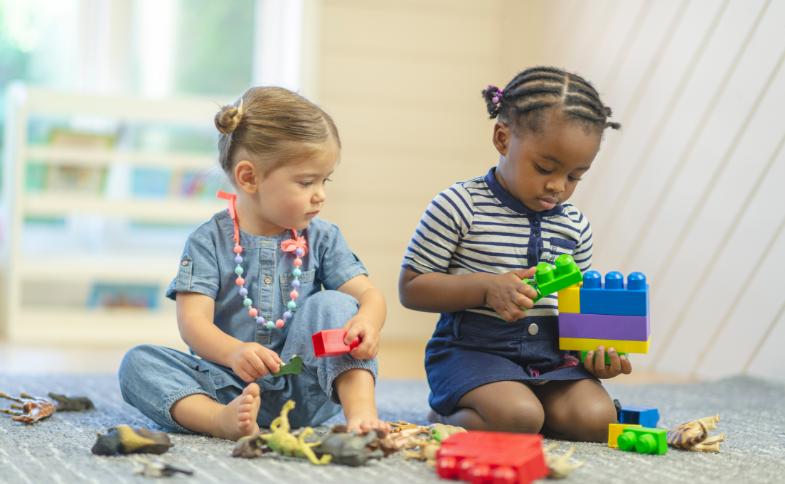How To Organize A Playdate
Social interaction is crucial for every child's development. Playdates provide the opportunity for kids to learn essential skills like sharing, communication, and cooperation, all while having fun and forming precious friendships.
For parents, playdates also offer a chance to connect with other parents, exchange advice, and build a supportive community around you. In this way, Playdates are more than just social gatherings. They are cherished moments that nurture both your child's growth and your own well-being.
Therefore, organizing playdates is a win-win for everyone involved. Here is how to do it right.

Finding Playdate Partners
Organizing a playdate begins with finding suitable playmates for your child. Utilize all opportunities to meet other parents in your neighborhood, such as neighborhood walks, local park visits, or joining parenting groups. Apps like Peanut can also be a useful tool for connecting with like-minded parents.
The key is to not only make initial connections but also follow through by exchanging contact information and arranging playdates. Just like your child learns the importance of commitment, be the parent who nurtures these newfound relationships.
Schedule Wisely:
Once you find your child’s playdate partner, the next step is to schedule the playdate wisely. Organizing the playdate requires careful consideration of your child’s routine.
Schedule playdates around nap times and meals to ensure your child is well-rested and fed, reducing the chances of meltdowns. Don’t overcommit yourself or your child – set realistic availability and prioritize quality over quantity when it comes to the frequency of playdates.
Setting Up the Playdate
Invitations and Communication:
We touched on this a little bit in the previous point, but after identifying potential playdate partners, it’s time to send out invitations. Be clear and specific with your proposed dates and times, providing enough notice to accommodate everyone’s schedules.
Discuss any special needs or preferences your child may have and feel free to inquire about the other family’s preferences or allergies. Whether it’s through a text message, a phone call, or a parenting app, ensure to confirm the details beforehand.
Location and Duration:
The choice of location for the playdate should be suitable for all parties involved. This could be your home, a local park, or an indoor play area. If you’re hosting at home, prepare a designated play area with age-appropriate toys and activities. Keep in mind the age and interests of the children when selecting the venue. Also, consider setting a reasonable duration for the playdate, especially for toddlers, to avoid overstimulation or meltdowns.

Choosing Fun Playdate Activities
Once you’ve set up a playdate, it’s time to plan some engaging activities for the kids. Here are some activity ideas:
- Craft Corner: Gather art supplies like colored paper, markers, glue, and safety scissors. Let the kids unleash their creativity by making paper masks, finger puppets, or simple origami animals. It’s not just about the end result; the process of creating together fosters bonding.
- Nature Scavenger Hunt: If you’re hosting the playdate outdoors, organize a scavenger hunt. Create a list of items commonly found in your surroundings – leaves, rocks, flowers, etc. – and let the kids explore. They’ll learn about nature while having a blast.
- Storytime: Set up a cozy corner with pillows and blankets. Choose age-appropriate books and take turns reading aloud. Encourage the kids to discuss the story afterward. Who knows, you might spark a love for reading!
- Obstacle Course: Indoors or outdoors, create a mini obstacle course using pillows, hula hoops, and chairs. Crawling under tables, jumping over cushions, and balancing on a line of tape can be both entertaining and great for gross motor skills.
- Baking Together: If you’re comfortable with a little mess, involve the kids in baking cookies or cupcakes. They’ll enjoy measuring ingredients, mixing, and decorating. Plus, they get to taste their delicious creations afterward.
Remember to tailor the activities to the children’s ages and interests. The goal is to keep them engaged and excited throughout the playdate.

Playdate Etiquette
For more information on playdate etiquette, check out our episode on playdate etiquette for parents. That said, here is the gist of it:
Sharing and Cooperation:
Prior to the playdate, discuss with your child the importance of sharing and cooperation. Reinforce positive behaviors such as taking turns and using kind words through role-play scenarios. During the playdate, if conflicts arise, guide your child and their friend gently and model appropriate ways to resolve disagreements.
Parental Involvement:
While it’s crucial to allow children to engage in independent play, your presence and involvement are equally important. Be available to facilitate activities, offer gentle guidance, and ensure everyone’s safety. Suggest icebreaker games or activities to help the children warm up to each other, and set up engaging toys or games that encourage collaboration and creativity. However, avoid hovering too much to allow children the benefits of unstructured playtime.
Snacks and Refreshments:
Playdates can often work up an appetite. It’s a good idea to have simple snacks and refreshments ready. Opt for finger foods like fruits, veggies, or crackers, and offer water or juice. Be mindful of any dietary restrictions or allergies the other child may have, and communicate this information clearly with the other parent. Also, consider providing a snack for the adults to enjoy while supervising the playdate.
Ending the Playdate
It’s important to set a clear end time for the playdate. Communicate the duration upfront with the other parent and adhere to the agreed-upon timeline. This not only respects everyone’s schedules but also helps your child understand the concept of transitions and managing expectations.
Finally, as the playdate concludes, express your gratitude to the other parent for their time and for the playdate. If the playdate was successful, express your interest in scheduling future meetups and discuss potential dates or locations. This not only strengthens the bond between your families but also paves the way for more cherished memories.

Playdate Safety Tips
Safety always comes first. Here are some essential safety guidelines for successful playdates:
- Childproofing: Whether at home or another location, ensure the play area is childproofed. Cover electrical outlets, secure furniture, and remove any small choking hazards.
- Supervision: While kids need space to explore, keep a watchful eye on them. Be ready to step in if any conflicts arise or if they need assistance.
- Allergies: Always inquire about allergies before serving snacks. Label any homemade treats with ingredients to avoid accidental exposure.
- Emergency Contacts: Exchange emergency contact information with the other parent. It’s better to be prepared.
Final Thoughts
Organizing playdates may seem daunting. However, it is also very rewarding and definitely worth it.
The good news is that when you follow these practical tips outlined here, organizing your little one’s next playdate should be a walk in the park. Remember, you're not only creating joyful experiences for your little one but also building a supportive community for yourself.
So, embrace the playdate. Cherish these little moments with your kiddo. Help your child form those magical friendships. And in the process, you’ll create precious memories that will last a lifetime. Good luck!